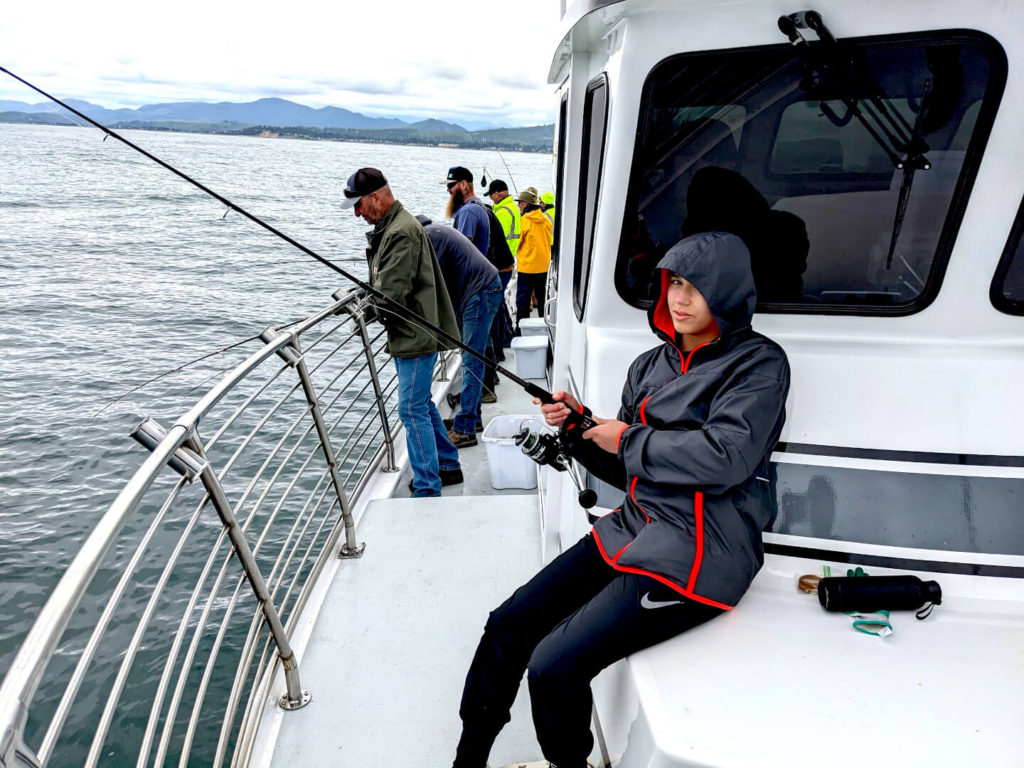
What’s it like charter fishing off the Oregon Coast? We went out with Dockside Charters in Depoe Bay to find out. Our boat was the Surfrider, the newest of four 50-foot Delta Marine pilothouse trawlers that run for Dockside Charters.
What’s Hot
- Reasonable price, especially when you consider the value of your catch
- Friendly, helpful crew
- Bountiful options for great fishing throughout the year
What’s Not
- The weather is cold and wet for most of the year; even summer can be dreary
- Waters off the Oregon Coast can be treacherous
- No control over who you’ll be sharing a boat with
Our Charter Boat Boat
Surfrider is a 50 foot Delta Marine pilothouse. Delta Marine in Seattle, WA built these boats in the late 70’s. The boats running out of Depoe Bay have been updated, refit, and repowered over time. They all run twin diesels that can get the boats up on a plane. Surfrider brought us back into the harbor at 14 knots.
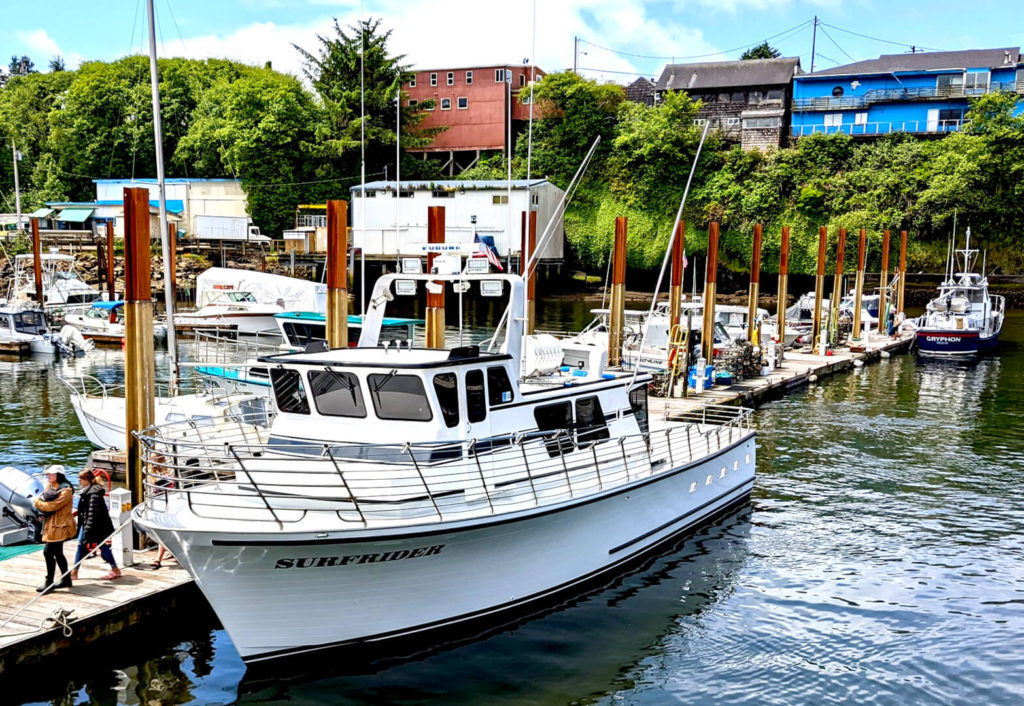
Recently refit, she is a very clean, solid, well-equipped boat. The boat has a running water head (toilet). A heated cabin with ample seating has plenty of room to store your gear and keep it dry and has some [free] hot coffee on tap. In addition to the cabin, a covered seating area on the stern allow repreive from the weather on wet days. There’s plenty of room to sit in the cockpit at the rear of the boat. Wide sidedecks and an open bow allow fishing on all sides.
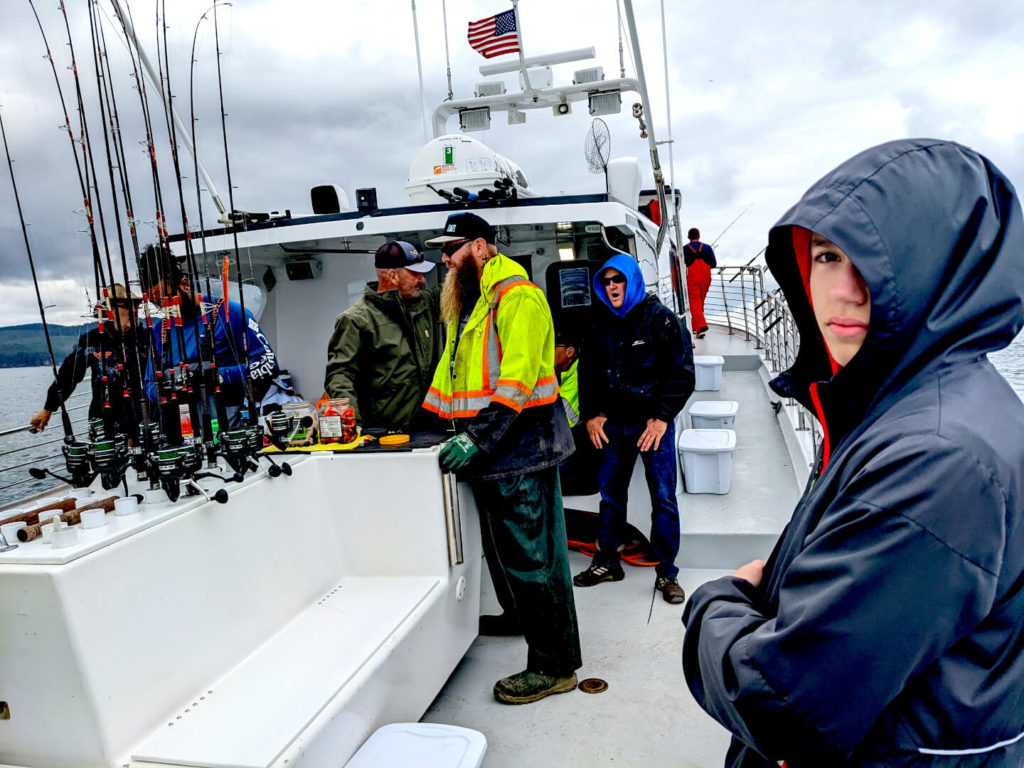
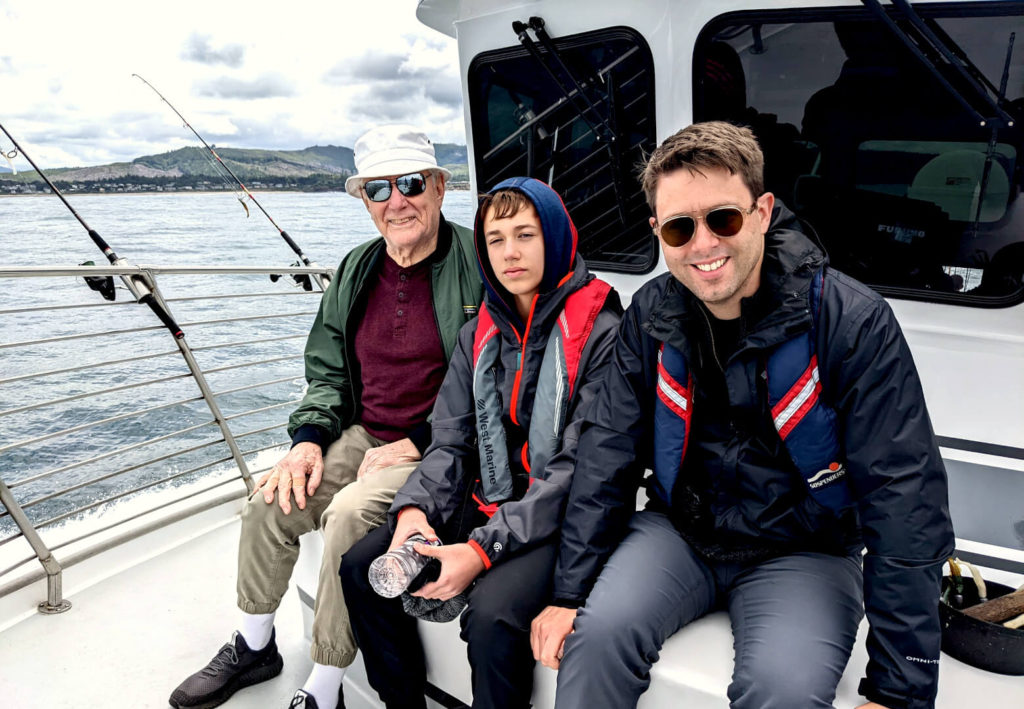

The other three Delta 50’s are very similar. However, they also have one smaller boat, Triumph. Triumph is a 33 foot single with an open deck. Triumph only takes six people out. This makes it ideal if you don’t like crowds, or you want to charter the whole boat.
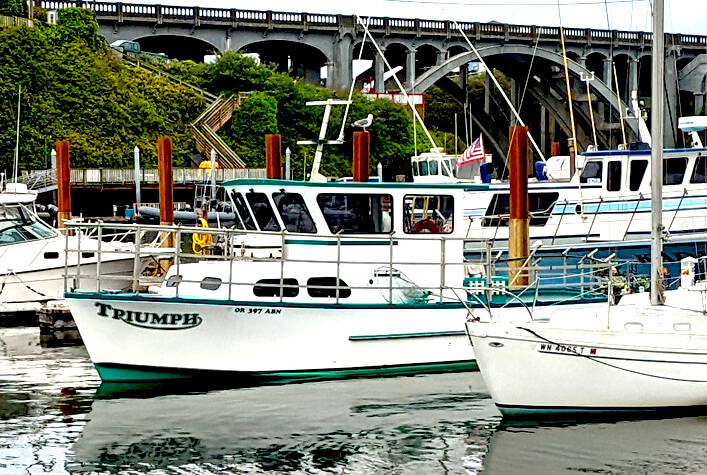
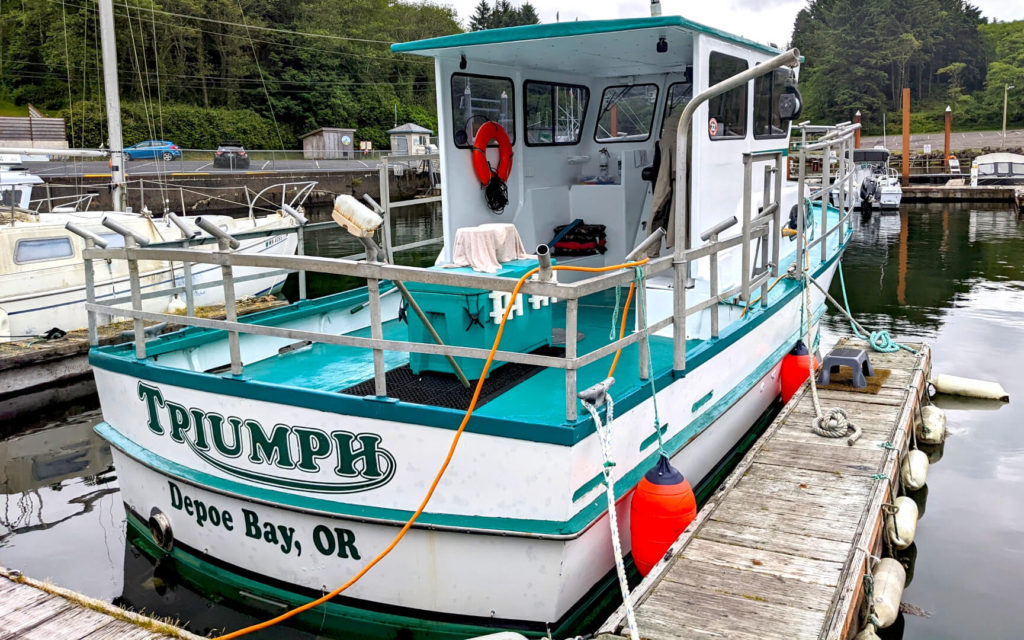
Typical of Oregon Coast fishing charter boats, each of these trawlers is owned by its captain. The captain is the most important variable in a charter boat. A great captain will get you on the fish (and safely back to shore). Surfrider and her captain have a strong reputation. On the day we went out, the morning charter came back having hit their limit 90 minutes early, leaving time to go whale watching. Our charter easily hit our limit on rockfish (five each), but busted on ling cod. We did okay on crab too with 10 keepers across my party of three (the limit was 36).
Advantages of a Crewed Fishing Charter
The waters on the Oregon Coast are very treacherous. While we lucked out and had a very calm day, the strong currents, tight channels, cold water, and sharp rocks can make our adventures in Hawaii’s surf and Bahamas’ cuts look like child’s play. Because of this, nobody offers bareboat charters here. You either own a boat, know someone who does, or go on a crewed charter…or fish from the shore. In addition to having a Coast Guard certified captain with experience navigating these harsh waters, larger groups go on larger boats that are more capable of handling less ideal conditions in comfort. The charter crews also know where the fish are and how to catch them. So you’ll be more likely to bring something home than if you go on your own. Going on crewed charters is a good way to learn how and where to fish.
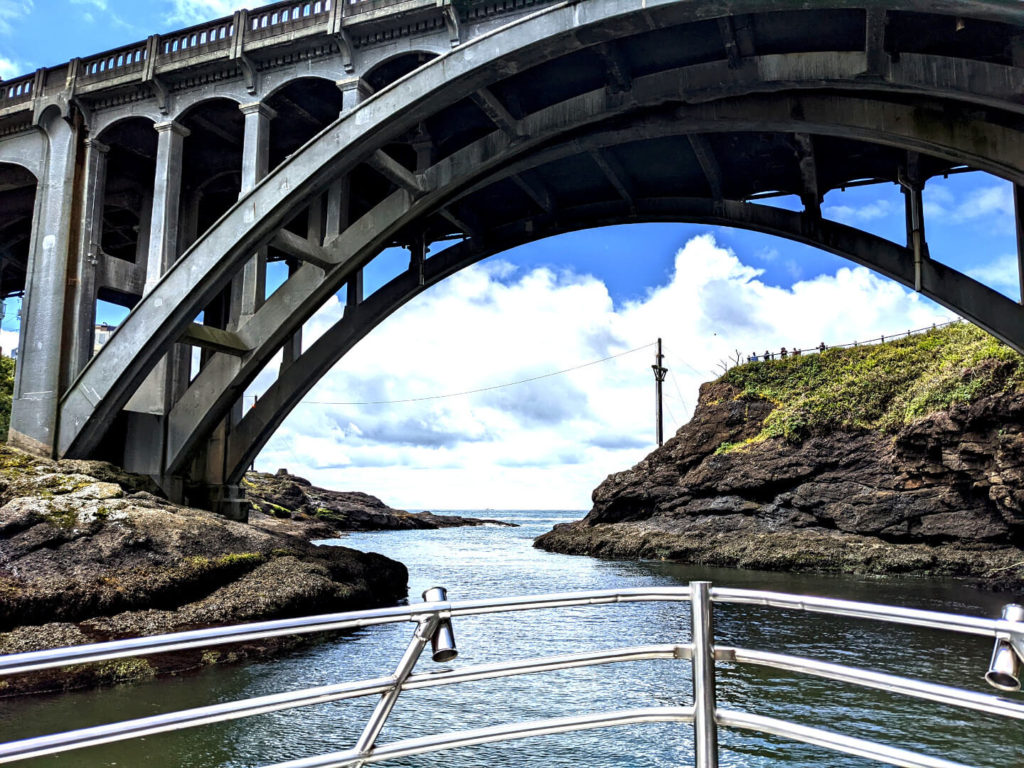
The less glamorous side of fishing is handled by the pros. Our crew gutted the fish on the boat, then filleted them when we came ashore. In addition to not having to clean up a mess of fish guts, they get more meat off the bone than I would, and are able to put the guts to good use as crab bait on the next charter. Perhaps even more attractive is the crab boil. The crew has a boiling pot of water ready to get your crabs boiled, cooled, and gutted as soon as you walk off the dock. The sooner you boil crabs after the catch, the better the meat as they begin to deteriorate from the stress of being caught almost immediately.
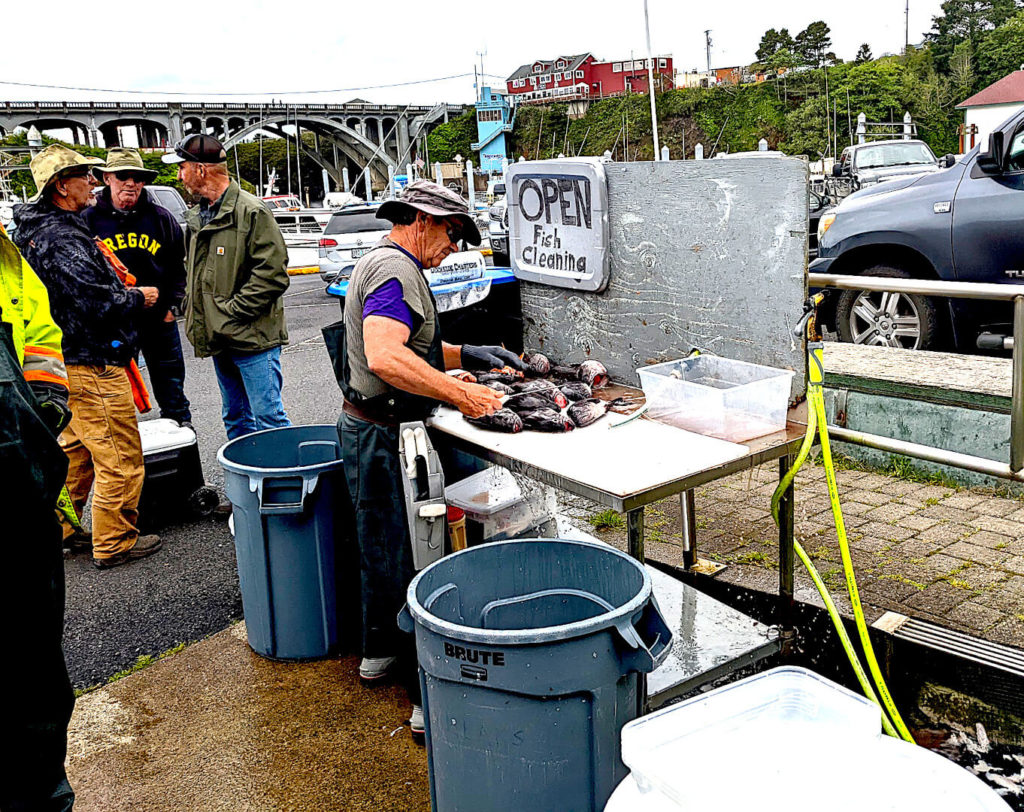
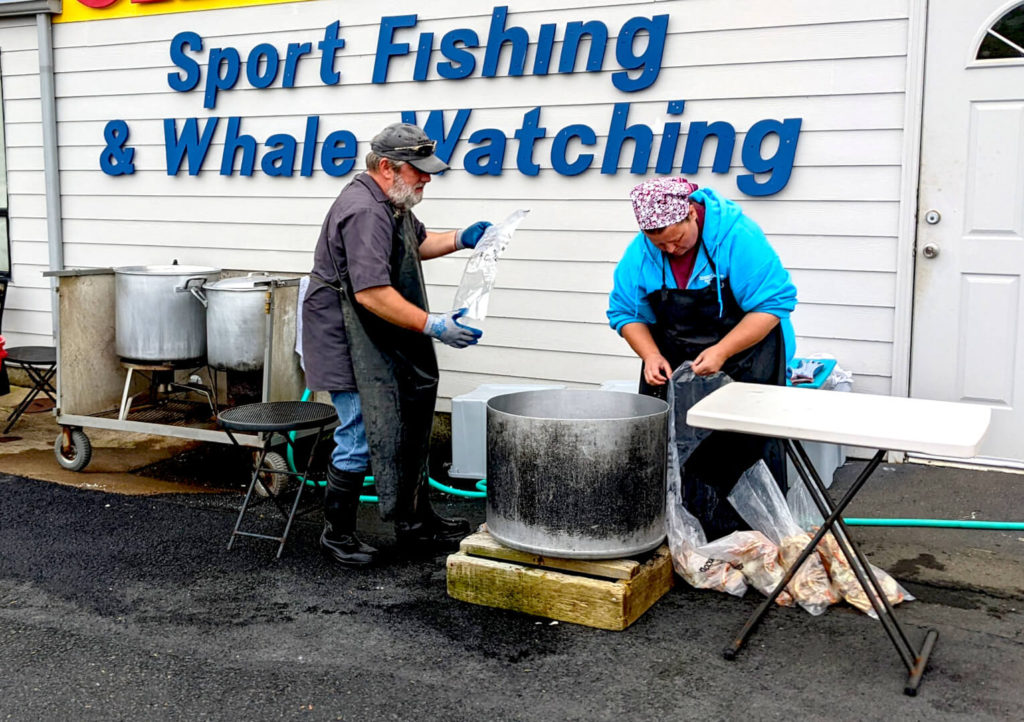
Sharing a Boat With Strangers?
There were 20 people on our Oregon Coast Fishing Charter (the boat can take up to 24). A few families. Mostly adult men. Everyone was polite and friendly. One thing I was concerned about was whether anyone would be smoking on the boat. A few people lit up on the way home, but they tried to stay off to the side out away from the rest of the charterers.
There are rod holders mounted on the rail all the way around the boat. The crew sets poles in the holders and makes two numbered bins for each group (if you are sharing your catch, you share bins). One bin is for freshly caught fish; once the crew has a chance to gut them, they go in the other bin for keeps. Out in the ocean, once you’ve caught your limit, you can continue to fish to help other anglers catch their limit; just hand them the rod once its hooked. This works both ways: others can help you get your limit if you fall behind.
What Kind of Fish Can You Catch on an Oregon Coast Fishing Charter
Rockfish
We went fishing for rockfish because it was the only charter available when we booked. Rockfish charters are 5-hours long and can be booked for the morning or afternoon. The cost of the charter is $100, and you can pay $25 to add a crabbing option; more on that later. Rockfish is open year-round.
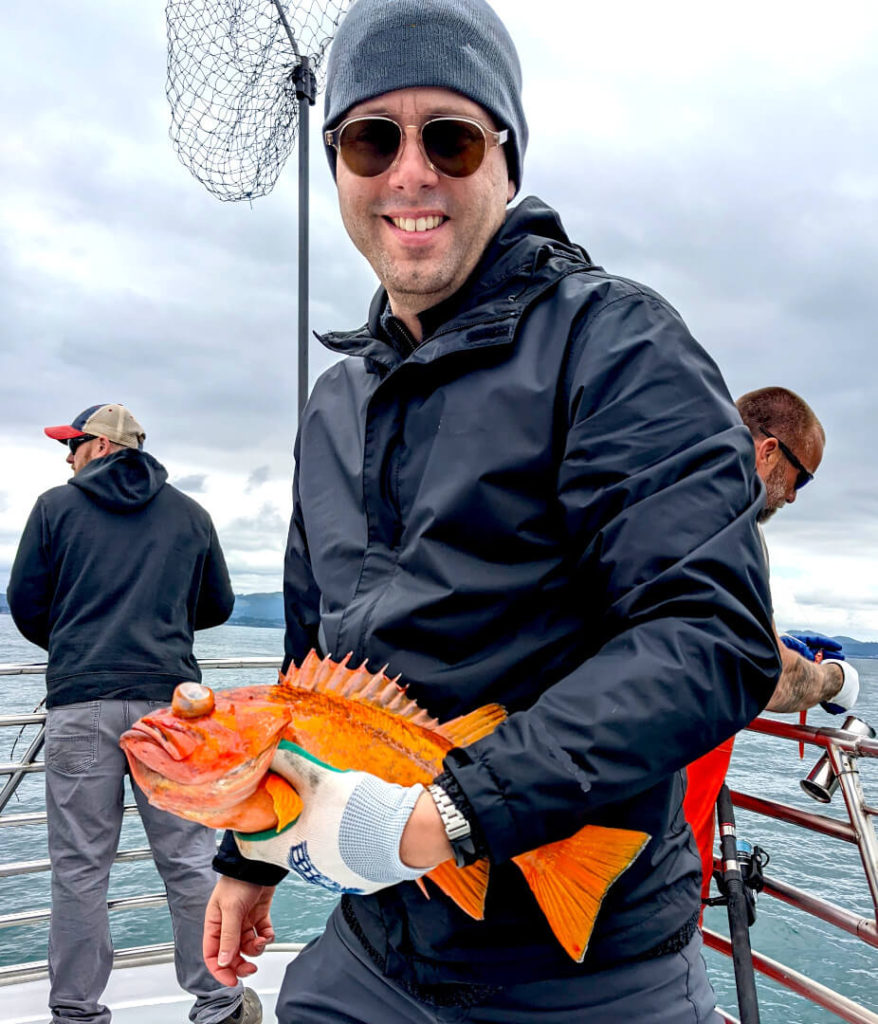
Catching rockfish is a pretty reliable way to come back with your daily limit, but they aren’t as exhilarating to catch as some other fish I’ve been after. The captain gets the boat on top of the fish and lets us know how deep to drop the hooks, which have a plastic lure attached. Once you get to the prescribed depth (based on how many seconds you drop the line), you slowly jig the pole up and down until you get a tug. Then you reel it in until the fish is on top and a guide will pull it up with a net.
While there can be a lot of reeling, the fish doesn’t put up too much of a fight. As long as you don’t try to pull the fish out of the water, you don’t have much worry of the fish getting off the hook. Honestly, for me, this got boring pretty quick.
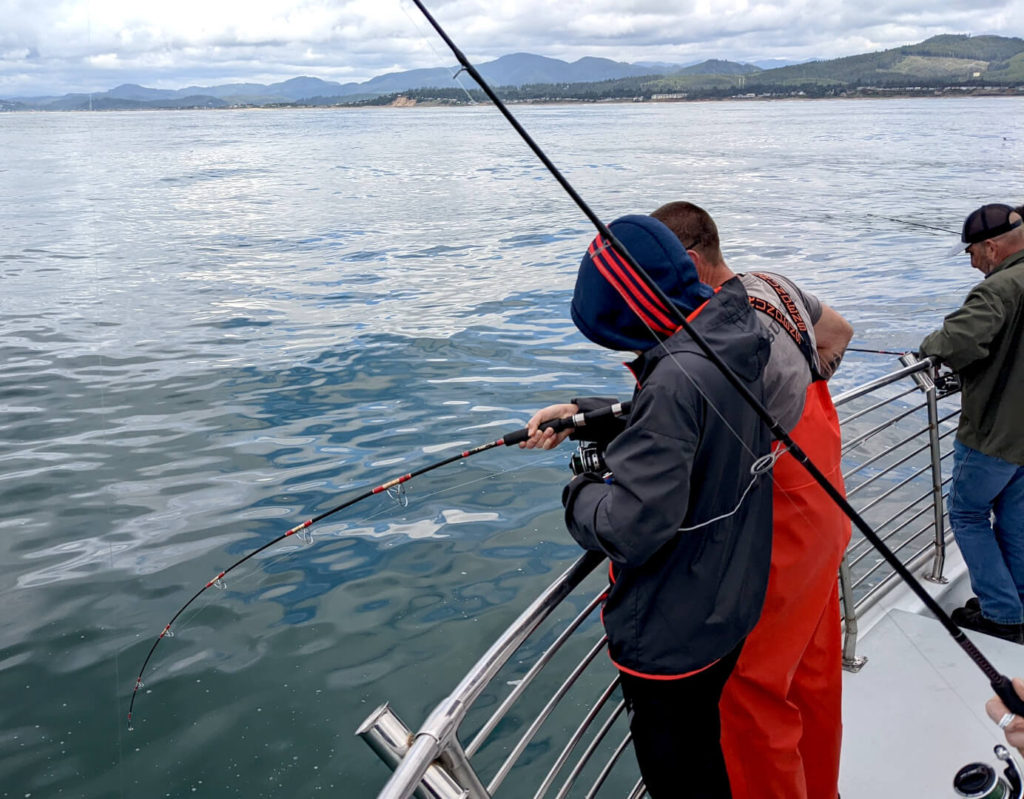
Our fifteen fish cut into thirty filets probably weighed about fifteen pounds total. When we got home, we froze them between parchment paper. Rockfish are soft and mild fish (read: plain, or just okay). We get a few out each week, bread them, and cook them in the air fryer for fish tacos. They’d be also be good in a light curry or risotto, but don’t expect them to steal the show at your next dinner party.
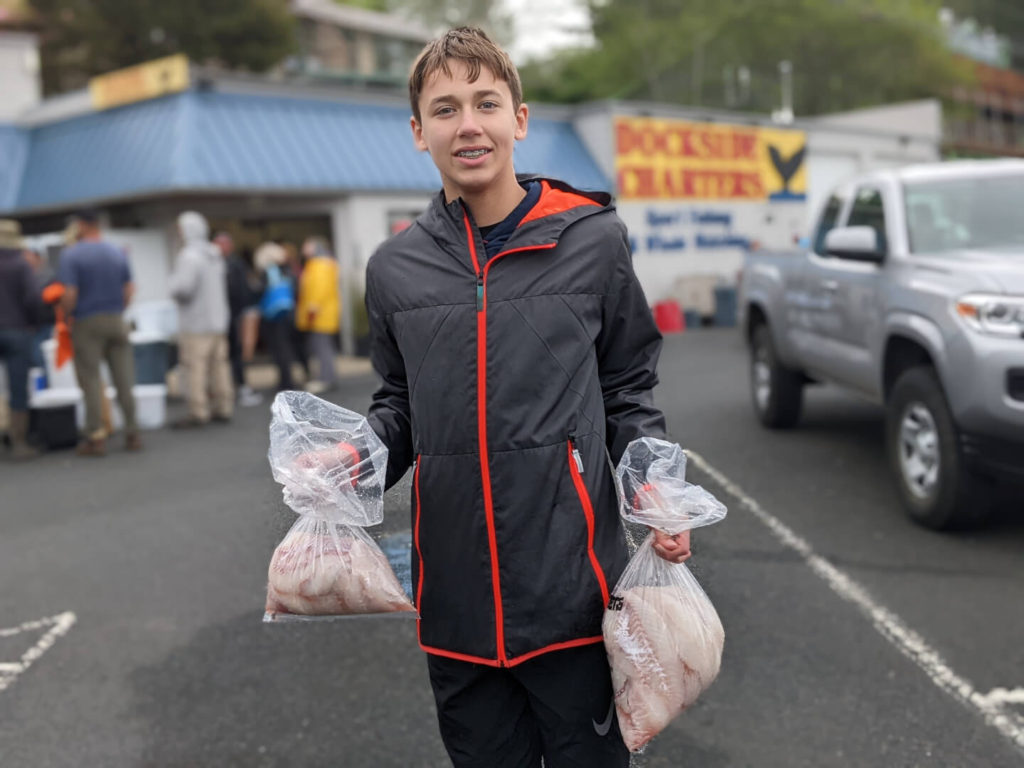
Lingcod
Once everyone on the boat hit their limit, we went out trolling for lingcod. I guess cod is technically a rockfish, only much bigger. So if you get one, they can be more exciting to bring into the boat. They are unfortunately more elusive. Nobody caught a lingcod on our charter.
Dungeness Crab
Dungeness crab are quite a bit smaller than king or snow crab, so you’ll have your work cut out for you at the dinner table. They taste far better though, so its worth the effort. Oregon and Washington commercial crab season runs for only a few days each December, but recreational crabbing is open most of the year. When we were there in June, previously frozen crab was selling in Newport for $18.99/lb IN THE SHELL!!! So getting out to catch your own fresh meat is totally worth it.
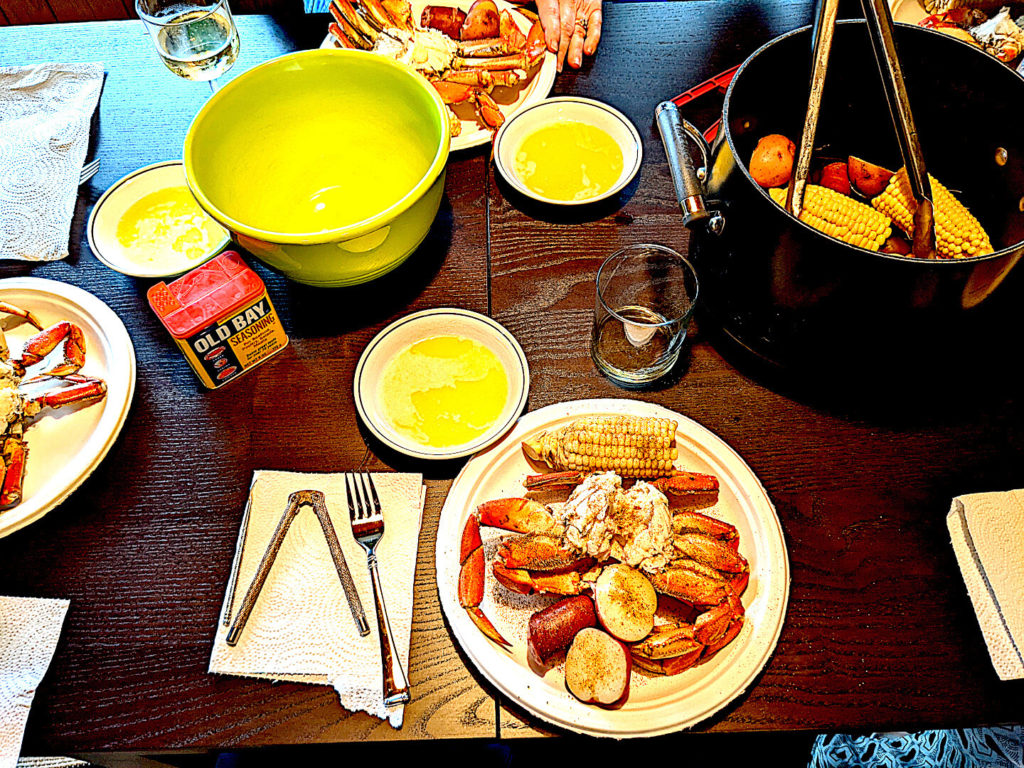
On the way out to go after the rockfish, our crew dropped crab pots baited with fish heads from their last charter. On the way back, everyone that paid for the dungeness crabbing option split the work of pulling the pots (and ultimately whatever we caught). In Oregon, recreational fishers cannot use electric pot pullers like you see the commercial boats using on Deadliest Catch; they must be pulled up by hand. Crab pots have more drag in the water when full, so a pot that’s tough to pull should be motivating in itself.
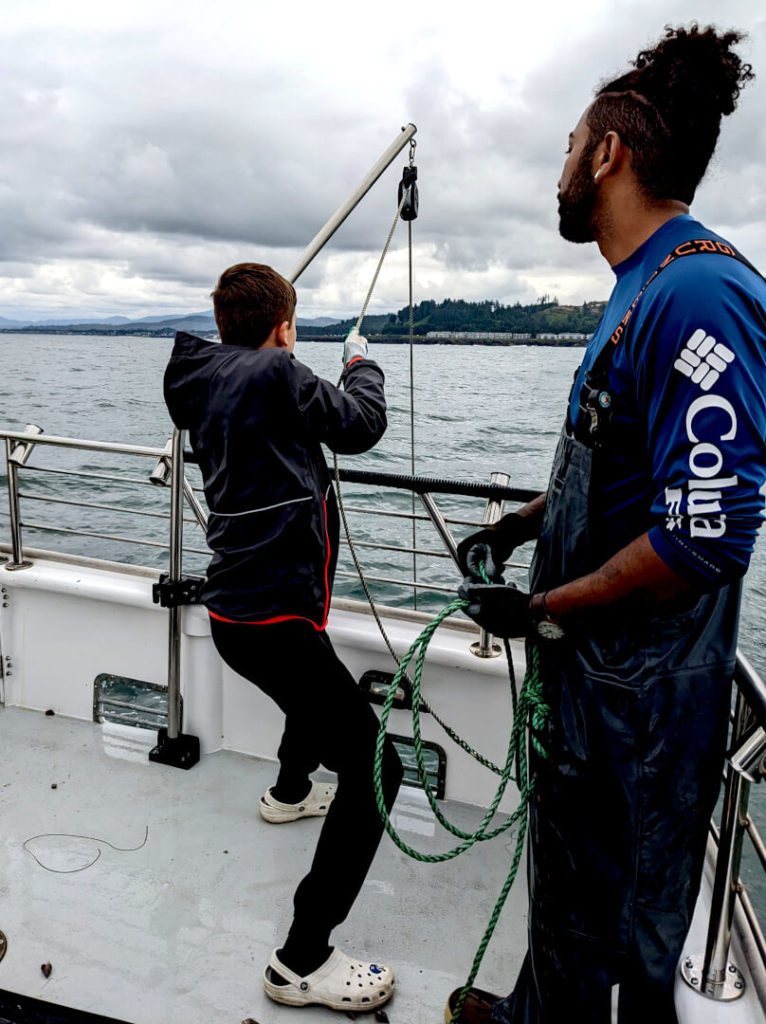
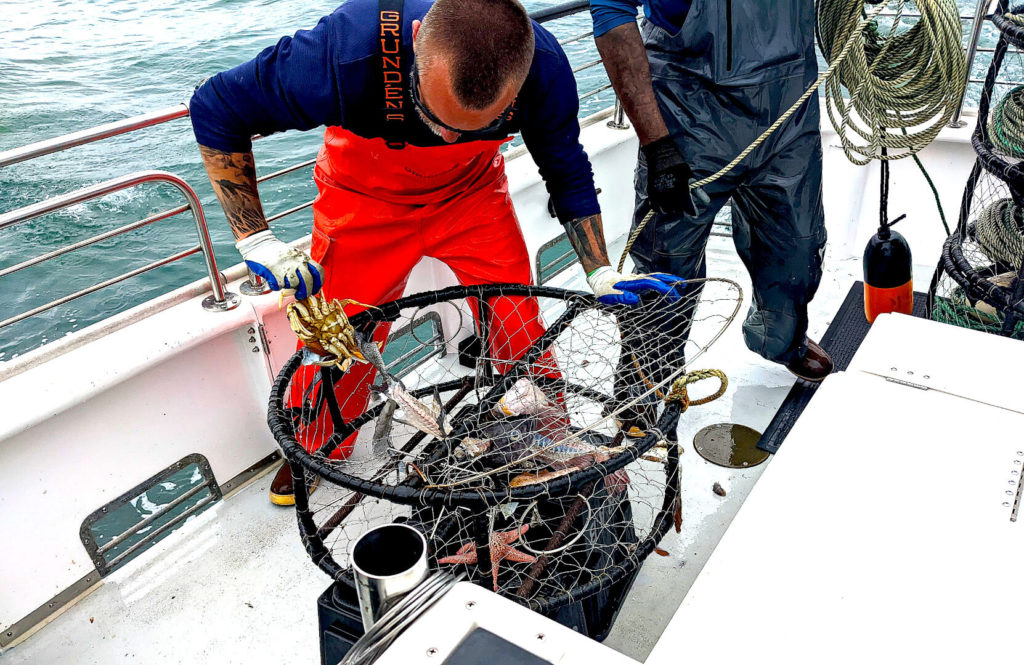
Our boat dropped 14 pots and we caught enough crab for each crabber to take 5 crabs home: with my crew of three, 15 crabs was more than enough for a crab boil that night, followed by crab omelettes, crab melts, and crab ramen later that week. The bag limit on crab is 15 per person, so be prepared to come back with three times more more than we did, and have a plan (like hungry friends) when you get home.
Salmon, Tuna, and Halibut
During the Summer (June-September) you can take a 5-hour salmon charter for $125. Halibut (May-September) and Tuna (July-October) charters are also available; these fish require you to head much further from shore, sometimes overnight.
If you are really into salmon, the Spring Chinook (aka king salmon) run on the Columbia River is one of the best fisheries in the world. I say that because the thrill of reeling in a chunky Spring Chinook is a one of a kind experience. Then, eating the thick fatty meat is next level compared to any other salmon you’ll eat.
Whale
If you’d prefer a more laid back cruise, you can book a whale watching tour. The Oregon Coast is a great place to see whales, with the best whale watching in the Spring and Fall. This is when gray whales migrate through the area.
What Does it Cost and Where Can You Charter on The Oregon Coast
We paid $100 for the 4-hour rockfish charter, and $25 to add the crab option. You’ll also need a valid Oregon fishing license, and shellfish if you crab. One day licenses are $23 plus $9.50 for crabbing if you don’t already have an annual pass. We also spent $10 each (person) to have our fish fileted and $7 to have the crabs boiled and cleaned.
So total cost would be $175 including the 1-day fishing license. At the absurd out of season crab prices, we each walked away with over $200 worth of crab and $35 worth of rockfish, so you could say this charter was better than free.
5-hour salmon charters are $125 with additional costs for salmon tags on top of the fishing license. Expect the longer Halibut and Tuna charters to be priced accordingly.
Getting to Your Oregon Coast Fishing Charter
The Oregon Coast is about 2 hours west of Portland. That’s close enough to drive out for the day; just make sure to bring a cooler to keep your catch cold on the way home. If you are flying in from out of town, you’ll need a car rental.
We fished out of Depoe Bay, which is between Newport and Lincoln City; all great places to rent a room or house for a few nights. Newport is the largest of these three towns, bustling with commercial fishing operations and tourists traps. If you don’t catch your own fish, head to Local Ocean Seafoods is the next best thing, a real local treasure (and far better than Mo’s Frozen & Fried).
You can also stop along the way to the beach drink, gamble, see an SR-71 Blackbird, or eat lunch with a monkey. Oh, and if you haven’t been to the beach here: know that the cold, violent Pacific Ocean is better suited for walking along than swimming in.
When to Go on an Oregon Coast Fishing Charter
Charters are available year-round with rockfish, crabbing, and whale watching seasons open most of the year. Salmon, halibut, and tuna seasons run from late Spring to early Fall. Your chances for calm water and dry weather are better from June to September. Temperatures are mild all year, so you’ll have a great trip anytime of year with good rain grar.
What to Bring on Your Oregon Coast Fishing Charter
The crew on your charter will take care of just about everything. Your responsibility is to stay warm, hydrated, and fed. Our boat had plenty of room inside the dry cabin for everyone to toss a backpack or a small cooler. I packed my gear in a drybag, but it wasn’t necessary.
Dress in layers because it can get very cold, wet, and windy out on the water. But if the sun breaks through the clouds on a calm day, it can get warm. So be sure to pack a hat and sunscreen too. Between the rain, fog, and sweat, you’ll need clothing that can help manage moisture.
Our charter, and most fishing charters, do not provide food. So pack a cooler with some snacks, lunch, and bevies. Beer is allowed; just bring cans and not bottles because you won’t make any friends if you fill the boat with broken glass. I like to bring ginger snaps and crackers to settle my stomach in case I get a little seasick.
